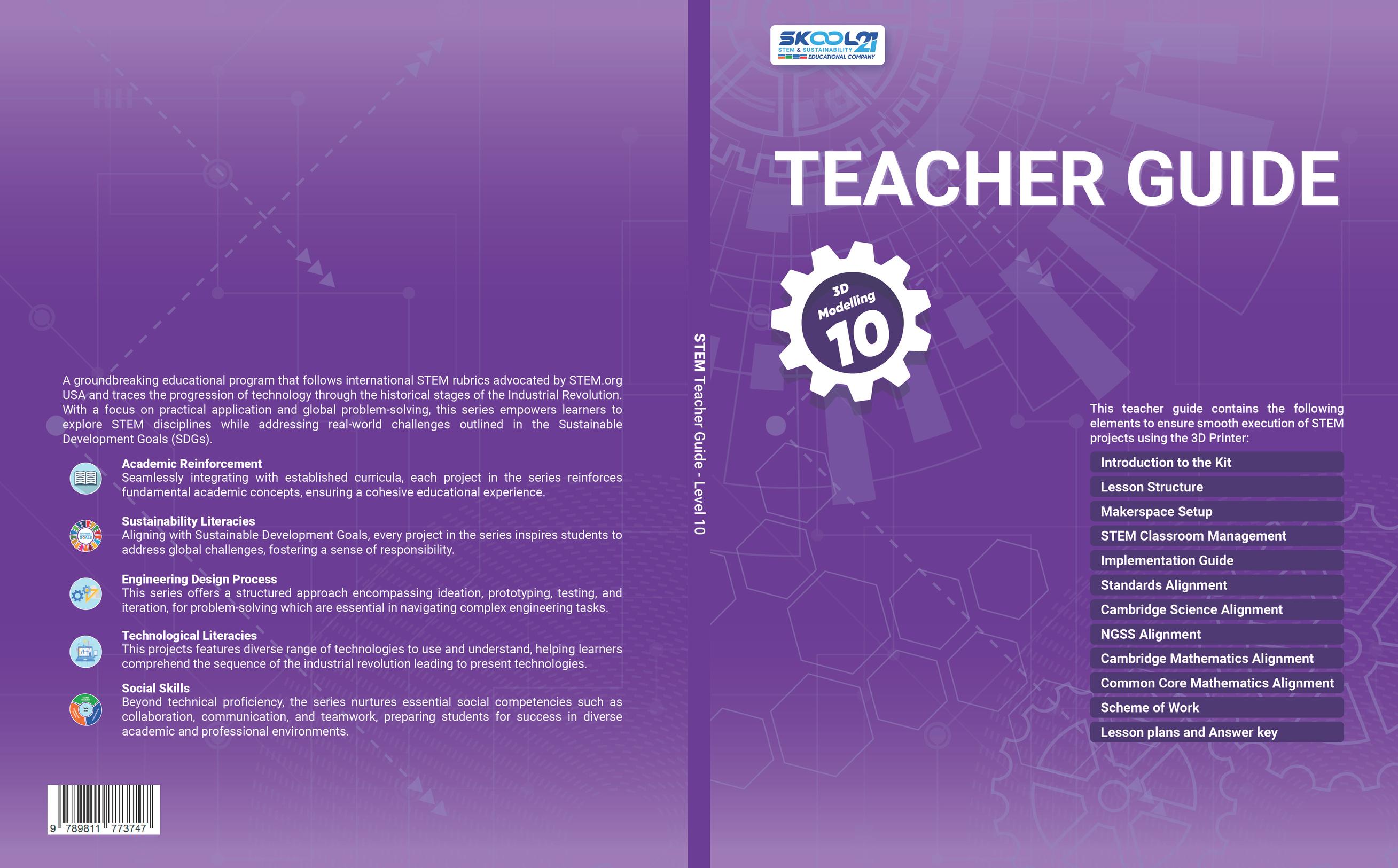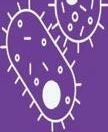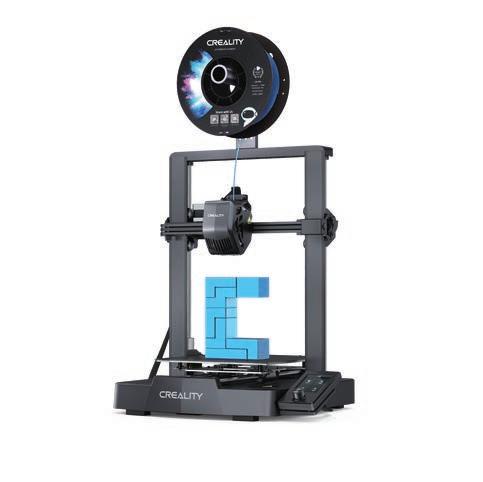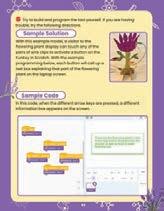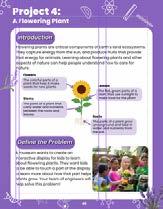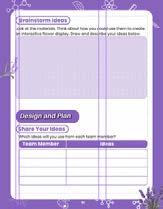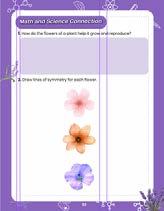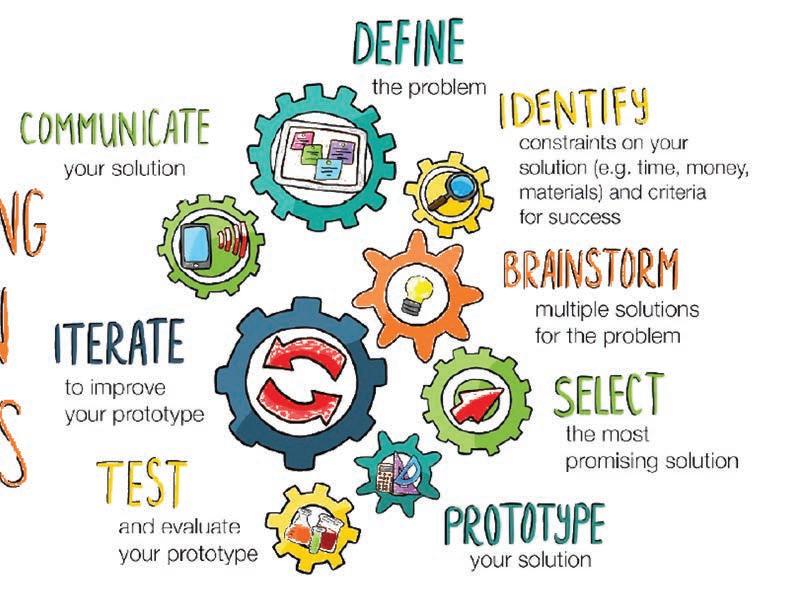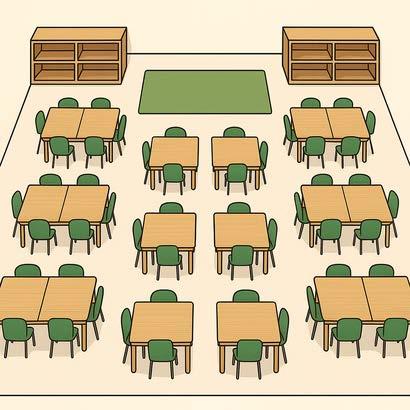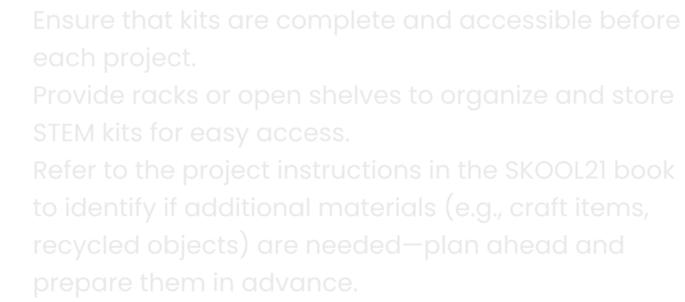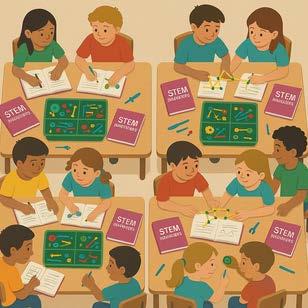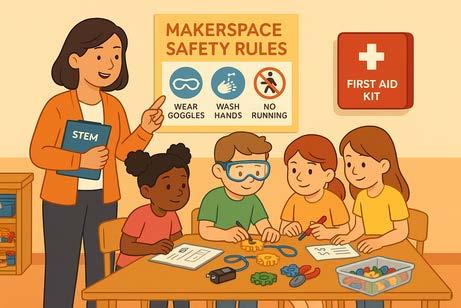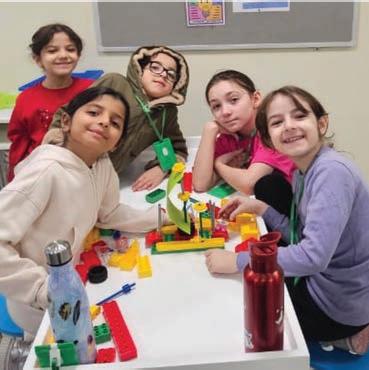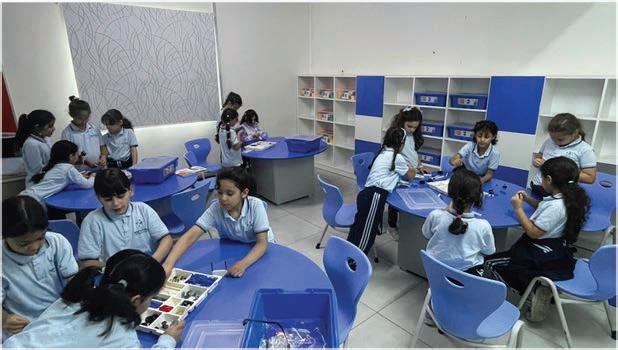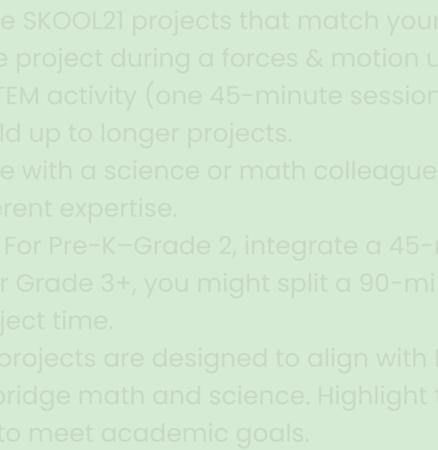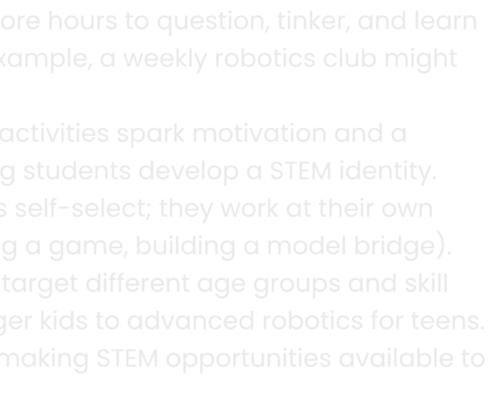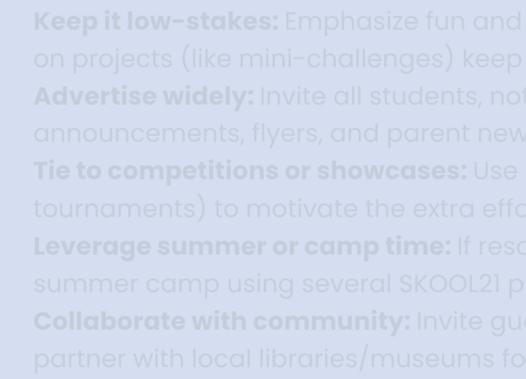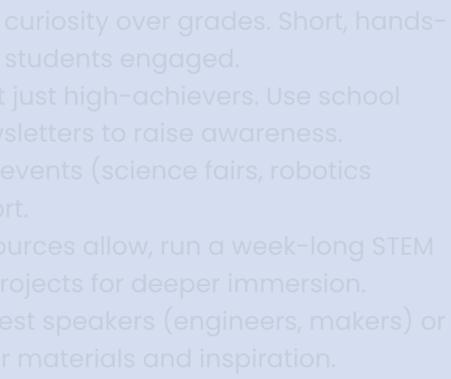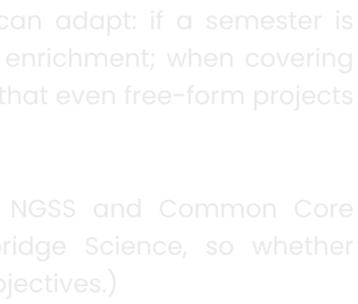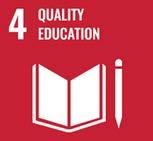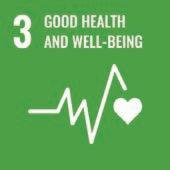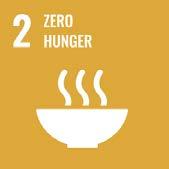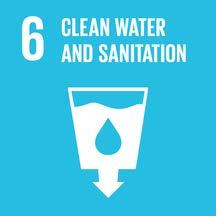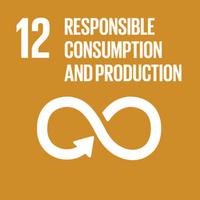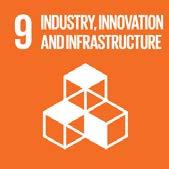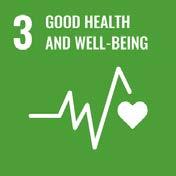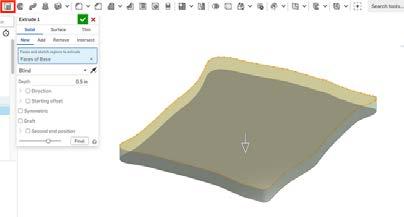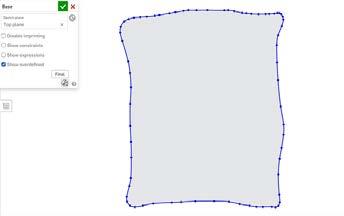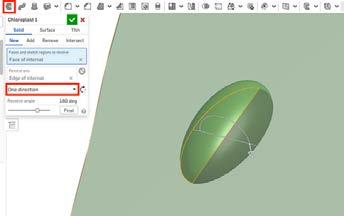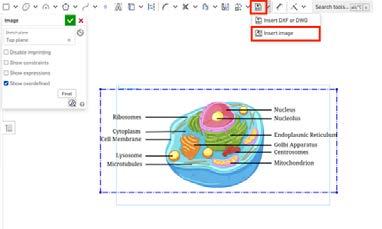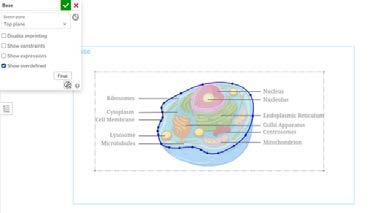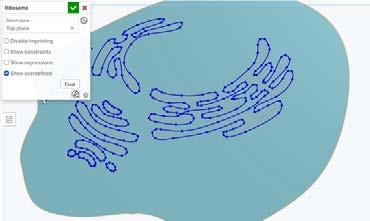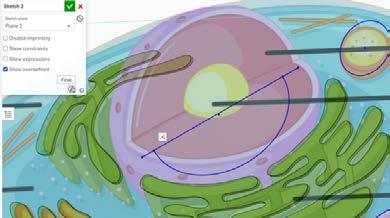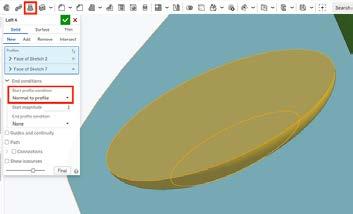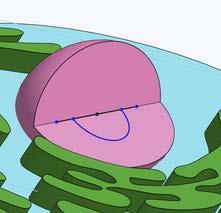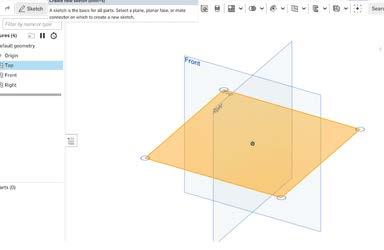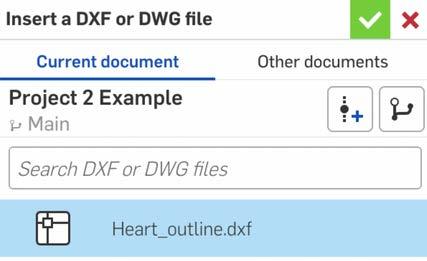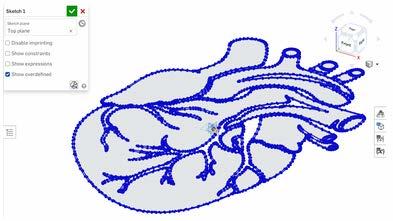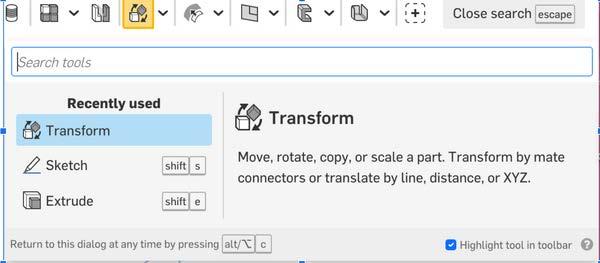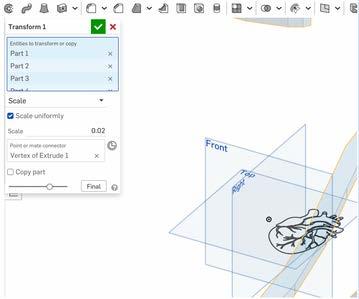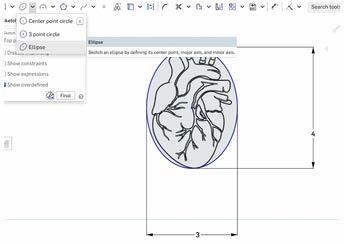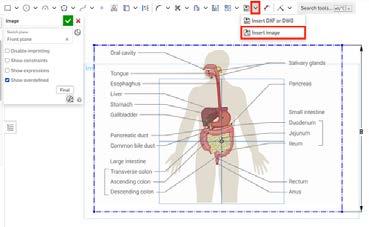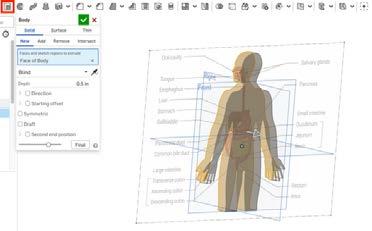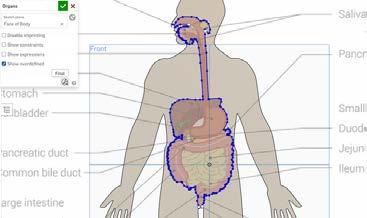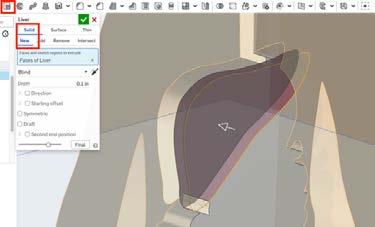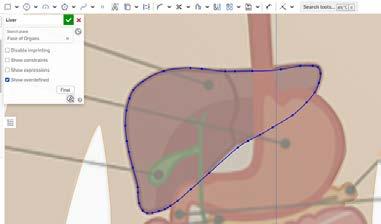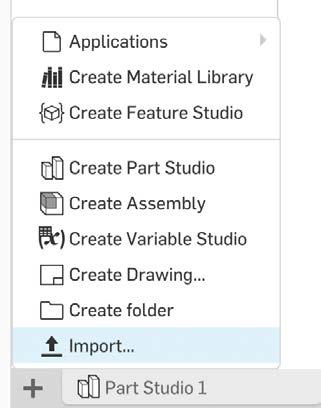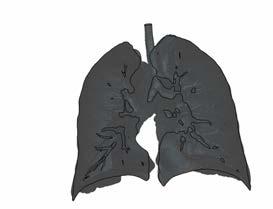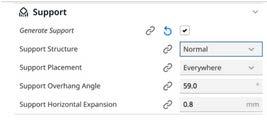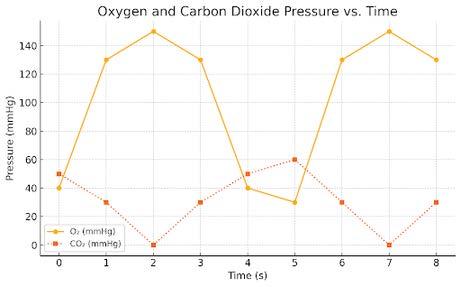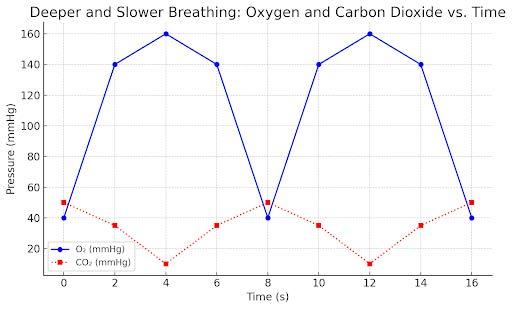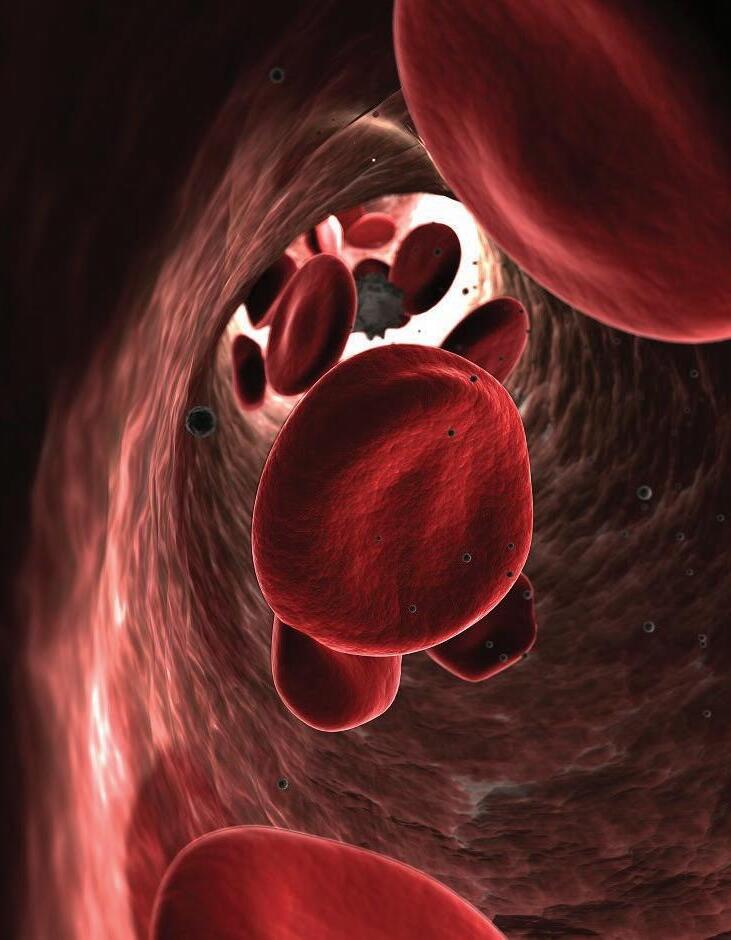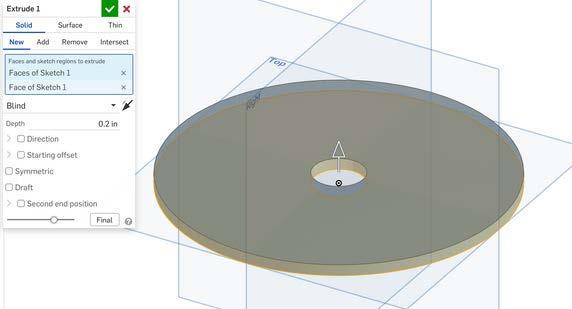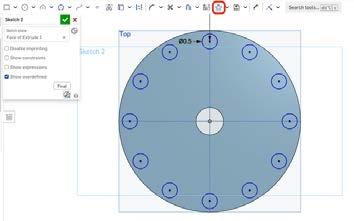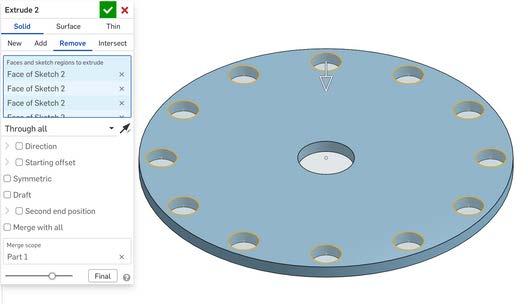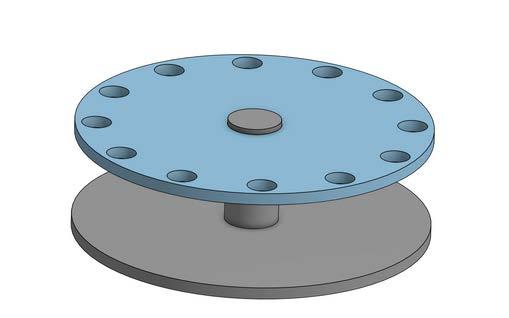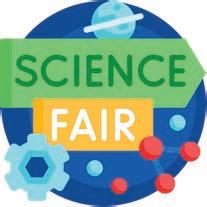TeacherGuide-3DModellingandPrintingLevel10
Teacher Guide
Copyright©2024
Copyright © 20
Author: DanaAlkhatib
Editors: LindseyOwnandErinGoodwin
ISBN: 978-981-17737-4-7
Publishedby:
SKOOL21PTE.LTD.-Singapore
DUOTower,Level8#831
3FraserStreet,189352,Singapore
Allrightsreserved,firstedition2024. Nopartofthisbookmaybereproduced,distributed,ortransmittedinanyformorby anymeans,includingphotocopying,recording,orotherelectronicormechanical methods, withoutthepriorwrittenpermissionofthepublisher,exceptinthecaseof briefquotationsembodiedincriticalreviewsandcertainothernon-commercialuses permittedbycopyrightlaw.
Forpermissionsorinquiries,pleasecontact:
Email: info@skool21.org
Website: https://skool21.org
Preface WelcometotheFutureofTeachingandLearning! Welcome to th
Thank you for joi designed not on meaningful, han young innovato science, technol
BuildingonaStrongFoundation Each level of the
novators series is teachers to lead es, you will guide challenges using creating a strong
Thankyouforjoiningusonthisexcitingjourney!TheSKOOL21STEMInnovatorsseriesis designednotonlytoignitecuriosityinstudentsbutalsotoempowerteacherstolead meaningful,hands-onSTEMlearningexperiences.Throughthisseries,youwillguide younginnovatorsastheyexplore,design,andsolvereal-worldchallengesusing science,technology,engineering,andmathematics(STEM).
EachleveloftheSKOOL21STEMseriesbuildsuponthepreviousone,creatingastrong continuumoflearning—fromsimplemachinestoadvanced3Dmodeling.Students travelthroughkeytechnologicaleras,fromtheIndustrialRevolutiontothe innovationsshapingourfuture.Nomattertheirstartingpoint,everylearnerwill discovernewskillsanddeeperunderstandingalongtheway.
LearningbyDoing AtSKOOL21,webelievestudentslearnbestbydoing.Eachbookcomeswitha comprehensiveSTEMkit,enablingstudentstobuild,test,andexploreconcepts throughhands-onchallenges.Asateacher,youwillfacilitateengagingprojects wherestudentsactivelycreate,problem-solve,andapplycriticalthinkingskills—all whilehavingfun.
MakingaReal-WorldImpact Everyprojectisdesignedtoconnectlearningtoreal-worldissues,inspiredbythe SustainableDevelopmentGoals(SDGs).Throughthesechallenges,studentsseehow theirideascancontributetosolvingproblemslikecleanwateraccess,renewable energy,andenvironmentalconservation—empoweringthemtoenvisionabetter world.
TeachingLikeaPro TheSKOOL21STEMprogramalignswithinternationalstandardsandbestpractices, ensuringthatbothteachersandstudentsaredevelopingthecollaboration, innovation,anddesignthinkingskillsvaluedintoday’sworld.You’renotjust supportingschoolwork—you’repreparingthenextgenerationofthinkers,leaders, andchangemakers.
Building on a not just leaders, and c
IntroductiontotheKit TheSTEMInnovatorsHandbookLevel10isdesignedforstudentslookingto advancetheir3Ddesignskills.Expandingonfoundationalconcepts,thislevel introducesmoreadvanced3Dmodelingtechniquesandchallengesstudents toapplytheirknowledgetoreal-worlddesignproblemsusingprofessionalgradesoftwareandtools.
AtthecoreofthekitistheCrealityEnder-3V3SE—ahigh-performanceFDM (FusedDepositionModeling)3Dprinterrenownedforitsprecision,speed,and reliability.TheEnder-3V3SEenablesstudentstotransformtheirdigital creationsintohigh-qualityphysicalmodels,bringingtheirideastolifewith impressivedetailandconsistency.
TechnicalFeatures
LessonStructure Eachlessoninthehandbookfollowsastructuredformattoensureclarityand effectiveimplementation.Asamplesolutionisalsofoundattheendofeach lesson.Thestructureincludes:
Lessonobjectives NGSSStandards
CambridgeScienceStandards
ISTEStandardsConnections
CambridgeMathStandards
CommonCoreMathStandards
DefinetheProblem Studentsareintroducedtothescienceconcept andarelatedrealworldproblemtheyaretasked withsolving.
GettingStarted Everyprojectbeginswithguidedfirststeps.This helpsthestudenttoconfidentlytacklethe challengewithasolidfoundation.
DesignandPlan Build-Test-Improve Studentsbrainstormindividually,thencollaborate withtheirteamtocomeupwiththebestdesign plan.
Studentscollaboratetobuild,test,andimprove models.Then,theypracticegivingandreceiving constructivefeedback.
MathandScienceConnection/Reflect Studentsconnecttheirlearningbacktothe academicobjectivesandanswerguided reflectionquestions.
SampleSolution Thesamplesolutionisavailableforgroupswhoare strugglingevenaftertryingtodeveloptheirown solution.
TheEngineeringDesignProcess ocess TheEngineeringDesignProcess(EDP)isasystematicapproachusedby engineersanddesignerstosolveproblemsandcreateinnovativesolutions.It providesastructuredframeworkfordevelopingnewproducts,processes,or systemsbyfollowingaseriesofwell-definedsteps.Thisprocessisnotonly applicableinengineering,butisalsowidelyusedinvariousSTEMdisciplinesto tacklechallengesanddevelopcreativesolutions.
Forstudentsinfirstgradeandabove,thetypicalEngineeringDesignProcess followsmultipleiterativesteps,includingidentifyingaproblem,researching, brainstorming,designing,prototyping,testing,andrefiningsolutions.
Thisstructuredapproachencouragescreativity,criticalthinking,anditeration, formingastrongfoundationforfutureSTEMlearning.
forming a str
FosteringSocialSkills STEMactivitiesnaturallybuildkeysocialskills.Teacherscanhelpstudents practiceandstrengthentheseskillsbyguidingthemduringgroupwork, discussions,andprojectchallenges.
Keysocialskillsdevelopedinclude:
Encouragestudentstoshareideas andassignrolesduringgroup worktobuildteamworkand respectfordifferentperspectives.
Promptstudentstoask"why"and "whatif"questionswhensolving problemsordesigningsolutions.
Collaboration EmpathyandRespect
Remindstudentstovalue everyone'sideasandsupport peersbyusingkind,respectful language.
Coach studentstotalkthrough disagreementscalmlyandfind solutionsthateveryonecan accept.
Buildreflectionintotheprocessby askingstudentswhatworkedwell, whatwaschallenging,andwhat theywoulddodifferentlynexttime.
Communication
Modelclearcommunicationand askstudentstoexplaintheir thinkingandlistencarefullyto teammates.
Problem-Solving Challengestudentstotrydifferent strategieswhentheyface obstaclesandpraisepersistence.
TimeManagement Helpteamssetmini-deadlines andguidethemtobreakprojects intosmaller,manageabletasks.
PresentationSkills
Givestudentsregularchancesto presenttheirworktopeers,using clearspeakingandsupportive feedback.
Teamworking
Celebratestrongteamworkby recognizingwhenstudentsshare leadership,encourageeachother, andsolveproblemstogether.
TeachingSTEMalsoteachesstudentshowtothink,work,andlead.Byactively supportingsocialskillsduringprojects,teacherspreparestudentsnotjustfor academicsuccess,butforfuturecareersandlifechallenges.
academic su
MakerspaceSetup Amakerspaceisacreative,hands-onareawherestudentsexploreSTEM conceptsthroughbuilding,experimenting,andsolvingproblemstogether.This guideisdesignedforteacherswhoarenewtoSTEMandlookingforclearstepsto setupandmanageamakerspace.
SpaceDesign:
Chooseaclean,well-litspacewithroomtomove. Arrangetables/chairsinclustersof2–4students. Uselow,openshelvesforeasyaccesstomaterials. For30students,750–900sqftisrecommended (25–30sqftperstudenttoallowmovement, collaboration,andtool/machine/materialuse).
MaterialsManagement:
Ensurethatkitsarecompleteandaccessiblebefore eachproject.
Provideracksoropenshelvestoorganizeandstore STEMkitsforeasyaccess.
RefertotheprojectinstructionsintheSKOOL21book toidentifyifadditionalmaterials(e.g.,craftitems, recycledobjects)areneeded—planaheadand preparetheminadvance.
SharedResources:
ProvideoneSTEMkitpersmallgroup. Encourageteamworkbyhavingstudentsco-design andco-buildprojects.
SafetyFirst: Keep a fi
Setsimplesafetyrulesandreviewoften. Supervisealltooluseclosely. Keepafirst-aidkitinthespace.
STEMClassroomManagement STEMclassesarehands-on,highlyengaging,andoftennoisy—that’sagood thing!Butwithoutclearroutinesandstructures,theycanquicklybecome chaotic.Awell-managedmakerspaceallowsstudentstoexploreandinnovate safely,responsibly,andcollaboratively.
STEMClassSessionRoutine
Setaclearandconsistentstructuretoeachsessionsostudentsknowwhatto expectandstayfocused:
90-minuteproject (Grade3toGrade12)
Grade 3 to Grade 12)
5-minute
45-minuteproject (Pre-KtoGrade2)
o ect Pre-K to Grade 2)
SpaceOrganization:
Provideracksoropenshelvestostorekitsneatlyandaccessibly.
ToolandMaterialsRules:
Usetoolswithcare–noplayingormisusingmaterials.
Returneverythingtoitslabeledplace.
Askbeforetakingextrasupplies.
Handstoyourself—respectothers’creationsandspace.
Assignspecificworkzones:BuildArea,SupplyRack,QuietZone,Cleanup Station.
Keepaprojectmaterialchecklisttomakesurekitsarecompletebefore starting.
Onlyonegroupmember(MaterialManager)maycollectmaterialsatatime.
GroupManagementwithTeamRoles
Groupworkcanbemessywithoutstructure.SKOOL21encouragesstudent collaboration,sorotatingroleshelpsbalanceresponsibilityandensure activeparticipation:
Keepsteamontask,trackstime,encourages collaboration.
Collectskits/materialsfromtheteacher,ensuressupplies arereturnedpost-build.
Sharesoutcomes,challenges,andsolutionswiththeclass. Evaluatesthemodel,givesfeedback,suggestschanges.
ImplementationGuide TheSKOOL21STEMInnovatorsHandbookoffersproject-basedSTEMlessonsfor Pre-KthroughGrade12.Teacherscanusethreemainmodelstoimplementthese projects:
IntegratedApproach EmbedSTEMprojectsintoexistingscienceandmathlessons.Forexample,a scienceunitonplantsmightincludeahands-onengineeringchallengefrom thehandbook.ThisalignsSTEMactivitiesdirectlywithcurriculumstandards andlearningobjectives.ResearchshowsthatteachingSTEM subjectstogether (aswithintegratedlessons)deepensunderstandingandretentionandmakes learningmorerelevantandconnectedtotherealworld.
Advantages:
Reinforcesrequiredscience/mathstandardswithhands-onapplication. Buildsproblem-solvingandcritical-thinkingskillsthroughproject-based learning.
Helpsstudentsseeconnectionsacrosssubjects(an“interconnected viewpoint”).
Usesexistingclasstime(noextraperiodsneeded),soSTEMisn’tanadd-on butpartofthecurriculum.
PracticalTips:
Alignprojectstolessons: ChooseSKOOL21projectsthatmatchyourunit goals(e.g.useasimplemachineprojectduringaforces&motionunit).
Startsmall: BeginwithashortSTEMactivity(one45-minutesession)ina scienceormathlesson,thenbuilduptolongerprojects.
Co-teachifpossible: Collaboratewithascienceormathcolleagueto shareplanningandbringindifferentexpertise.
Usegrade-appropriatepacing: ForPre-K–Grade2,integratea45-min STEMmini-projecteachweek;forGrade3+,youmightsplita90-min scienceperiodintolecture+projecttime.
connect
Emphasizestandards: SKOOL21projectsaredesignedtoalignwithNGSS, CommonCorestandards,Cambridgemathandscience.Highlightthese connectionsinyourlessonplantomeetacademicgoals.
Stand-AloneClassApproach ScheduleadedicatedSTEMclassormakerspacesession(e.g.aweekly90minutelabperiodorrotatingSTEM special).Inthismodel,studentsworkina makerspaceorlabwithtoolsandmachines(likeroboticskits,3Dprinters,craft materials,etc.).Amakerspaceis“acollaborativeworkspaceinsideaschoolfor making,learning,andexploring”.StudentsinteamstackleSKOOL21projects fromstarttofinish,usinghands-onmaterialsratherthanjusttextbooks.
Advantages:
Focusedhands-onlearning:Studentscantakeabstractconceptsand makethemconcrete(forexample,learningcircuitrybyactuallybuildinga papercircuit).
Resilienceandcreativity:Thetrial-and-errornatureofmakingteaches perseverance;studentslearntoiterateondesignswhenthingsdon’twork andthusdevelopgrit.
Equityandaccess:Awell-stockedSTEMlabgivesallstudents(including girlsandunder-representedgroups)equalaccesstotechandengineering tools.
PracticalTips: g
Scheduleregularly: BlockoutaconsistentSTEMlabperiod(45–90 minutes)eachweekorrotateclassesin/outofthelab.
Preparematerialsinadvance: Keepcommonkits(e.g.robotics,simple circuits,designsets)readysoeachsessionisn’tdelayedbysetupand leavetimeforcleanupduringclass
Trainteachers: ProvidebasictrainingorguidesontheSKOOL21projectsso teachersfeelconfidentusingtheequipmentandmanaginghands-on activities.
Groupstudentsthoughtfully: Mixskilllevelsinteams;olderstudentscan mentoryoungeronesinamakerspaceproject.
Blendwithcurriculum: Eveninastand-aloneclass,tieprojectsto standards(e.g.acodingprojectthatteachesmathlogicoradesign challengethatreinforcesphysicalscienceconcepts).
Extra-CurricularApproach RunSTEMprojectsasafter-schoolclubs,lunch-timeactivities,orsummer camps.Theseareoptionalprograms(STEMclubs,roboticsteams,coding camps,etc.)whereinterestedstudentscanexploreSKOOL21challengesmore freely.After-schoolSTEM“engagesstudentsinhands-on,real-worldprojects,” makingSTEMfeelexcitingandrelevant.
Advantages:
Extratimetoexplore:Studentsgetmorehourstoquestion,tinker,andlearn beyondthelimitedschoolday.Forexample,aweeklyroboticsclubmight meetforanhourafterschool.
Buildsinterestandidentity:Funclubactivitiessparkmotivationanda positiveattitudetowardSTEM,helpingstudentsdevelopaSTEMidentity.
Flexibleandstudent-driven:Studentsself-select;theyworkattheirown paceoncreativeprojects(e.g.codingagame,buildingamodelbridge).
Reachesdiverselearners:Clubscantargetdifferentagegroupsandskill levels–frombasicscienceforyoungerkidstoadvancedroboticsforteens. Thishelpsbridgeenrichmentgaps(makingSTEMopportunitiesavailableto allstudents).
PracticalTips: Keepitlow-stakes: Emphasizefunandcuriosityovergrades.Short,handsonprojects(likemini-challenges)keepstudentsengaged.
Advertisewidely: Inviteallstudents,notjusthigh-achievers.Useschool announcements,flyers,andparentnewsletterstoraiseawareness. Tietocompetitionsorshowcases: Useevents(sciencefairs,robotics tournaments)tomotivatetheextraeffort.
Leveragesummerorcamptime: Ifresourcesallow,runaweek-longSTEM summercampusingseveralSKOOL21projectsfordeeperimmersion.
Collaboratewithcommunity: Inviteguestspeakers(engineers,makers)or partnerwithlocallibraries/museumsformaterialsandinspiration.
HybridApproach (BlendingAllModels) Inpractice, manyschoolsuseamixofmodels.Ahybridapproachmight integratesimpleSTEMtasksintoregularlessonsandalsoofferadedicated STEMlabplusanafter-schoolclub.Thisway,everystudentgetssomeSTEM exposureandthosewholoveitcandivedeeper.
Whentointegrate: Usecurriculum-linkedprojectsduringcoreclasses.Forexample,inaGrade4mathclassyou mightuseaSKOOL21projectongearstoteachratios,orinscienceclassstudentsmight buildamodelecosystem.Smallerorsingle-sessionactivitiesfitwellhere.
Reservelonger,open-endedprojectsforSTEMclassorthemakerspace.Complex engineeringchallenges(robotdesign,3Dmodeling,advancedcoding)needlongerblocks, sothesesuita90-minSTEMperiodorseriesoflabsessions.
Offerstudentsaspaceforexplorationthatdoesn’tfitthecurriculumortimeline.These projectscanbedrivenbystudentinterestandcanspanseveralweekswithoutpressureto “coverthecurriculum.”
Usingahybridplanensuresflexibility.Teacherscanadapt:ifasemesteris heavywithtesting,leanonafter-schoolclubsforenrichment;whencovering standards,weaveSTEMintolessons.Alwayscheckthatevenfree-formprojects stilltouchacademicgoals.
(Note:SKOOL21projectsarealreadyalignedtoNGSSandCommonCore standards,CambridgeMathematicsandCambridgeScience,sowhether integratedorstand-alone,theysupportlearningobjectives.)
StandardsAlignment 1Cellmodel 60-90minutesHS-LS1-1
2Heartmodel60-90minutesHS-LS1-2
3Digestivesystem60-90minutesHS-LS1-2
4Lungmodel 60-90minutesHS-ETS1-211.1.2
5Centrifuge 60-90minutesHS-ETS1-39.4.1/9.4.3MP4
6DNAmodel 60-90minutesHS-LS3-1
7Punnetsquaresimul a 60-90minutesHS-LS3-3
8Foodchainmodel60-90minutesLS2.B
9Watercollector60-90minutesHS-ETS1-24.2
10Carboncyclecompo s 60-90minutesHS-ETS1-319.3.1
11Windanemometer60-90minutesHS-ESS3-42.2
HSG-MG.AC3.1
12Habitatrehabilation60-90minutesETS1.B
HSG-MG.A.3E1.11/E5.3
HSG-GMD.B.4E1.12.3 / E 5 . 3 3
HSA-SSE.AC1.6
13Soundamplifier60-90minutesHS-ETS1-33.4.7
14Levers 60-90minutesHS-PS3-3 1.7.2
15Multi-stagerocket60-90minutesHS-ETS1-21.2
CambridgeScienceAlignment LearningObjective 1.2
• Definespeedasdistancetravelledperunittime
• Definevelocityasspeedinagivendirection
• Recallandusetheequation
• averagespeed=totaldistancetravelled/totaltimetaken
• Sketch,plotandinterpretdistance–timeandspeed–timegraphs
• Determine,qualitatively,fromgivendataortheshapeofa distance–timegraphorspeed–timegraph
• Calculatespeedfromthegradientofastraightlinesectionofa distance–timegraph
• Calculatetheareaunderaspeed–timegraphtodeterminethe distancetravelledformotionwithconstantspeedorconstant acceleration
• Statethattheaccelerationoffreefallgforanobjectneartothe surfaceoftheEarthisapproximatelyconstantandisapproximately 9.8m/s2
• Defineaccelerationaschangeinvelocityperunittime
• Determinefromgivendataortheshapeofaspeed–timegraph whenanobjectismoving
• Calculateaccelerationfromthegradientofaspeed–timegraph
• Knowthatadecelerationisanegativeaccelerationandusethisin calculations
• Describethemotionofobjectsfallinginauniformgravitationalfield withandwithoutair/liquidresistance,includingreferencetoterminal velocity
1.7.2 Understand
Energyandtheenvironment 2.2
Candidatesshouldbeableto:
• classifythefollowingenergyresourcesasnonrenewableor renewable:
• fossilfuels,nuclearpower,biofuels,geothermalpower,hydroelectricpower,tidalpower,wavepower,solarpower,windpower
• describehoweachoftheseenergyresourcesisusedtogenerate electricity
• describetheenvironmental,economicandsocialadvantagesand disadvantagesofeachoftheseenergyresources
• non-renewable:fossilfuels,nuclearpowerusinguranium
• renewable:biofuels(bioethanol,biogasandwood),geothermal power,hydro-electricpower,tidalpower,wavepower,solarpower, windpower
Wateranditsmanagement 4.2
Candidatesshouldbeableto:
• describeandinterpretthewatercycle Furtherguidanceandexemplification:
• precipitation,surfacerun-off,interception,infiltration,through-flow, groundwaterflow,transpiration,evaporationandcondensation
9.1
Transportinanimals Describethecirculatorysystemasasystemofbloodvesselswith a pump andvalvestoensureone-wayflowofblood
9.4.1
Listthecomponentsofbloodas:redbloodcells,whitebloodcells, plateletsandplasma
9.4.3
Statethefunctionsofthefollowingcomponentsofblood:
(a)redbloodcellsintransportingoxygen,includingtheroleof haemoglobin (b)whitebloodcellsinphagocytosisandantibodyproduction (c)plateletsinclotting(detailsarenotrequired) (d)plasmainthetransportofbloodcells,ions,nutrients,urea, hormonesandcarbondioxide
Gasexchangeinhumans 11.1.2
Identifyindiagramsandimagesthefollowingpartsofthebreathing system:lungs,diaphragm,ribs,intercostalmuscles,larynx,trachea, bronchi,bronchioles,alveoliandassociatedcapillaries
Inheritance 17.1.1 StatethatchromosomesaremadeofDNA,whichcontains geneticinformationintheformofgenes
17.4.11 Usegeneticdiagramstopredicttheresultsofmonohybrid crossesandcalculatephenotypicratios,limitedto1:1and3:1ratios
Organismsandtheirenvironment 19.2.3 Describeafoodwebasanetworkofinterconnectedfood chainsandinterpretfoodwebs
19.3.1 Describethecarboncycle,limitedto:photosynthesis, respiration,feeding,decomposition,formationoffossilfuelsand combustion
Organizationoftheorganism 2.1.1 Describeandcomparethestructureofaplantcellwithan animalcell,limitedto:cellwall,cellmembrane,nucleus,cytoplasm, chloroplasts,ribosomes,mitochondria,vacuoles
Habitatdestruction
20.2.2 Describethereasonsforhabitatdestruction,including:
(a)increasedareaforhousing,cropplantproductionandlivestock production
(b)extractionofnaturalresources
(c)freshwaterandmarinepollution
Waves
3.4.7 Describehowchangesinamplitudeandfrequencyaffectthe loudnessandpitchofsoundwaves
Humannutrition 7.2.1
Identify in diagrams and images the main organs of the digestive system, limited to:
(a) alimentary canal: mouth, oesophagus, stomach, small intestine (duodenum and ileum) and large intestine (colon, rectum, anus)
(b) associated organs: salivary glands, pancreas, liver and gall bladder
7.3.1
Describe physical digestion as the breakdown of food into smaller pieces without chemical change to the food molecules
NGSSAlignment LearningObjective FromMoleculestoOrganisms:StructuresandProcesses HS-LS1-1
ofDNAdeterminesthestructureofproteins,whichcarryoutthe essentialfunctionsoflifethroughsystemsofspecializedcells
EngineeringDesign HS-ETS1-2 Designasolutiontoacomplexreal-worldproblemby breakingitdownintosmaller,moremanageableproblemsthatcan besolvedthroughengineering
HS-ETS1-3 Evaluateasolutiontoacomplexreal-worldproblem basedonprioritizedcriteriaandtrade-offsthataccountforarange ofconstraints,includingcost,safety,reliability,andaestheticsaswell aspossiblesocial,cultural,andenvironmentalimpacts.
Heredity:InheritanceandVariationofTraits HS-LS3-1 AskquestionstoclarifyrelationshipsabouttheroleofDNA andchromosomesincodingtheinstructionsforcharacteristictraits passedfromparentstooffspring
HS-LS3-3 Applyconceptsofstatisticsandprobabilitytoexplainthe variationanddistributionofexpressedtraitsinapopulation
Ecosystems:Interactions,Energy,andDynamics EarthandHumanActivity HS-ESS3-4 Evaluateorrefineatechnologicalsolutionthatreduces impactsofhumanactivitiesonnaturalsystems
HS-PS3-3 Design,build,andrefineadevicethatworkswithingiven constraintstoconvertoneformofenergyintoanotherformofenergy
CambridgeMathematics Alignment LearningObjective C1.1
Typesofnumber.Identifyanduse:
•naturalnumbers
•integers(positive,zeroandnegative)
•primenumbers
•squarenumbers
•cubenumbers
•commonfactors
•commonmultiples
•rationalandirrationalnumbers
•reciprocals.
C1.11
Understandanduseratioandproportionto:
•giveratiosintheirsimplestform
•divideaquantityinagivenratio
•useproportionalreasoningandratiosincontext.
C1.2 Understandandusesetlanguage,notationandVenn diagramstodescribesets.
C1.5 Orderquantitiesbymagnitudeanddemonstratefamiliarity withthesymbols=,≠,>,<, ⩾ and ⩽
C1.6 Usethefouroperationsforcalculationswithintegers, fractionsanddecimals,includingcorrectorderingofoperations anduseofbrackets
E1.11 Understandanduseratioandproportionto:
•giveratiosintheirsimplestform
•divideaquantityinagivenratio
•useproportionalreasoningandratiosincontext.
E1.12.3 Solveproblemsinvolvingaveragespeed
cs Algebraandgraphs C2.10 Constructtablesofvalues,anddraw,recogniseandinterpret graphsforfunctions.Solveassociatedequationsgraphically, includingfindingandinterpretingrootsbygraphicalmethods.
C2.7 Continueagivennumbersequenceorpattern.Recognise patternsinsequences,includingtheterm-to-termrule,and relationshipsbetweendifferentsequences.
Findandusethenthtermofthefollowingsequences: (a)linear (b)simplequadratic (c)simplecubic.
Coordinategeometry C3.1 UseandinterpretCartesiancoordinatesintwodimensions.
Geometry C4.6
Calculateunknownanglesandgivesimpleexplanations
Calculateunknownanglesandgivegeometricexplanationsfor angles
Knowanduseanglepropertiesofregularpolygons.
Mensuration C5.2 Carryoutcalculationsinvolvingtheperimeterandareaofa rectangle,triangle,parallelogramandtrapezium.
C5.4 Carryoutcalculationsandsolveproblemsinvolvingthe surfaceareaandvolumeofa:
•cuboid
•prism
•cylinder
•sphere
E5.3
Carryoutcalculationsinvolvingthecircumferenceandareaof a circle.
Carryoutcalculationsinvolvingarclengthandsectorareaas fractionsofthecircumferenceandareaofacircle.
SeeingStructureInExpression Interpretthestructureofexpressions
Linear,Quadratic,andExponentialModels HSF-LE-A Constructandcomparelinear,quadratic,and exponentialmodelsandsolveproblems
GeometricMeasurementandDimension HSG-GMD.B.4 Identifytheshapesoftwo-dimensionalcrosssectionsofthree-dimensionalobjects,andidentifythreedimensionalobjectsgeneratedbyrotationsoftwodimensional objects
ModelingwithGeometry HSG-MG.A Applygeometricconceptsinmodelingsituations
HSG-MG.A.3 Applygeometricmethodstosolvedesignproblems (e.g.,designinganobjectorstructuretosatisfyphysical constraintsorminimizecost;workingwithtypographicgrid systemsbasedonratios)
Similarity,RightTriangles,andTrigonometry HSG-SRT-C Definetrigonometricratiosandsolveproblems involvingrighttriangles
HSS-ID-A Summarize,represent,andinterpretdataonasingle countormeasurementvariable
Reasonabstractlyandquantitatively MP2 Mathematicallyproficientstudentsmakesenseofquantities andtheirrelationshipsinproblemsituations.Theybringtwo complementaryabilitiestobearonproblemsinvolving quantitativerelationships:theabilitytodecontextualize—to abstractagivensituationandrepresentitsymbolicallyand manipulatetherepresentingsymbolsasiftheyhavealifeoftheir own,withoutnecessarilyattendingtotheirreferents—andthe abilitytocontextualize,topauseasneededduringtheanipulation processinordertoprobeintothereferentsforthesymbols involved.Quantitativereasoningentailshabitsofcreatinga coherentrepresentationoftheproblemathand;consideringthe unitsinvolved;attendingtothemeaningofquantities,notjusthow tocomputethem;andknowingandflexiblyusingdifferent propertiesofoperationsandobjects
Modelwithmathematics MP4 Mathematicallyproficientstudentscanapplythe mathematicstheyknowtosolveproblemsarisingineverydaylife…. Inearlygrades,thismightbeassimpleaswritinganaddition equationtodescribeasituation.…
Mathematicallyproficientstudentswhocanapplywhattheyknow arecomfortablemakingassumptionsandapproximationsto simplifyacomplicatedsituation….Theyareabletoidentify importantquantitiesinapracticalsituationandmaptheir relationshipsusingsuchtoolsasdiagrams,two-waytables, graphs….They…reflectonwhethertheresultsmakesense
Lookforandexpressregularityinrepeatedreasoning MP8 Mathematicallyproficientstudentsnoticeifcalculationsare repeated,andlookbothforgeneralmethodsandforshortcuts. Upperelementarystudentsmightnoticewhendividing25by11 thattheyarerepeatingthesamecalculationsoverandoveragain, andconcludetheyhavearepeatingdecimal….Astheyworkto solveaproblem,mathematicallyproficientstudentsmaintain oversightoftheprocess,whileattendingtothedetails.They continuallyevaluatethereasonablenessoftheirintermediate results
SchemeofWork SessionObjectivesMaterials
1 (45mins)
Createandverify anOnshape education accounttoaccess 3Dmodelingtools. Designasimple 3Dboxby sketching,closing shapes,andusing theextrudetoolto adddepth.
Computerwith internetaccess OnShape account 3Dprinterwith filament
Curasoftware STEMbook
2 (45mins)
Createahollow 3Dcylinderby sketching Concentriccircles andusingthe extrudetoolon theouterringonly. Modifythe appearanceofa 3Dobjectanduse differentview anglestoinspect theirdesignfor accuracy.
Computerwith internetaccess OnShape account 3Dprinterwith filament Curasoftware STEMbook
systems
3 (45mins)
Createa3D sphereusingthe Revolvetoolona half-circlesketch inOnshape. Duplicateand modifythesphere withthe Transformand Scaletoolsto createanEllipsoid
Computerwith internetaccess OnShape account 3Dprinterwith filament Curasoftware STEMbook
and
Thisschemeofworkcomprises37sessions:5introductorylessons(each45 minutes),15projectssplitinto30sessions(each90-minuteprojectisdelivered astwo45-minutesessions),and1capstoneproject(90minutes,splitintotwo 45-minutesessions).Itcanworkforweekly45-minuteclassesorbiweekly90minuteclasses(twosessionscombined).
s (each 45
Lesson4:Curvedpipe Createand positionsketches onmultipleplanes usingtheOffset andDimension tools.
4 (45mins)
Constructa curvedpipeby usingtheSpline tooltodefinea pathandtheLoft tooltoconnect profiles
Computerwith internetaccess OnShape account 3Dprinterwith filament Curasoftware STEMbook
Computing systems Geometry and measure
Lesson5:Introductionto3DPrinting
Exporta3Dmodel asanSTLfileand prepareitfor printingusing slicingsoftware likeCura.
5 (45mins)
Understandhow theCrealityEnder 3operatesand troubleshoot commonissues, includingwarping, clogs,andfeeder problems.
Computerwith internetaccess OnShape account
3Dprinterwith filament Curasoftware STEMbook
Computing systems Geometry and measure
Project1:CellModels 6 (45mins)
7 (45mins)
Introduction to plant and animal cell structures and their respective functions. Exploring mathematical concepts through surface area and volume ratio calculations.
Create accurate 3D models of plant and animal cells using OnShape. Calculate and analyze the surface area-to-volume ratio for each cell model.
Computer with internet access OnShape account
3D printer with filament Cura software STEM book
Cellstructure Typesofnumbe
Project2:HeartModelKeychain 8 (45mins)
9 (45mins)
Understand the basic structure and function of the human heart.
Build a 3D model of the heart's keychain using OnShape.
Explore how 3D modeling assists in medical education and research. Reflect on the role of anatomical models in healthcare and bioengineering
Computer with internet access OnShape account
3D printer with filament Cura software STEM book
Project3:DigestiveSystemPuzzle
10 (45mins)
Introductiontothe humandigestive system. Buildadigestive systempuzzle usingOnShape
11 (45mins) Exploring mathematical conceptssuchas anglesand measurements. Reflectonthe importanceof visualmodelsin medicaltraining.
Computer with internet access OnShape account
3D printer with filament Cura software STEM book
Circulatory Systems Thefour operations
Digestivesystem Angles
Project4:LungModel
12 (45mins)
13 (45mins)
Understand the structure of lungs Explain gas exchange in the human respiratory system. Develop a 3D model to simulate lungs
Understandthe relationbetween Oxygenand CarbonDioxide
PressureVSTime Reflectonhow can3Dlung modelssupport well-being
Computer with internet access OnShape account
3D printer with filament Cura software STEM book
Gasexchangein humans Graphsand functions
Project5:Centrifuge
14 (45mins)
15 (45mins)
Understandthe circulatorysystem andbloodtypes Designa centrifuge machineto separateblood cellsfromplasma
Compare between WBC and RBC
Reflect on the importance of centrifuge machine
Computer with internet access OnShape account
3D printer with filament Cura software STEM book
Blood
Numberand Mensuration
Project6:DNAModel
16 (45mins)
17 (45mins)
Understand DNA structure andreplication, including the role ofcomplementary base pairs. Build a 3D DNA double helix model withcomplementary base pairs.
Calculateand analyzethe patternsofDNA model
Reflectontherole ofDNAmodeling forbetterhealth outcomes.
Computer with internet access OnShape account
3D printer with filament Cura software
STEM book
Project7:PunnetSquareSimulator
18 (45mins)
19 (45mins)
Understandthe Punnetsquare anditsrolein inheritance CreateaPunnett squareto understandthe pattern
Calculateand analyzethe probabilityof producingplants withcertain features
Reflectonhow canthePunnet squaresimulator helpothers
Computer with internet access OnShape account 3D printer with filament Cura software
STEM book Monohybrid Inheritance
Project8:FoodChainModel Understandfood chain,foodwebs, andhowtheyare connected
20 (45mins)
21 (45mins)
Buildamodelthat representsfood chainusing availablemodels onThingverse
Calculating volume of the trophic levels and the weight of filament used
Reflect on how could using these models help in understanding energy transfer
Project9:WaterCollector Computer with internet access OnShape account
3D printer with filament Cura software STEM book
Foodchainsand foodwebs
Ratioand proportion
22 (45mins)
23 (45mins)
Understand water cycle, water collection, and water shortages causes Design a water collection system to capture and store rainwater
Calculatethe volumeofthe watercollector systemandhow muchwateritcan collect
Reflectonhow coulddesigninga watercollector canhelpinwater management
Computer with internet access OnShape account
3D printer with filament Cura software STEM book
Environmental Management: Water and Its Management
Ratioand proportion
Project10:CarbonCycleCompostBin 24 (45mins)
25 (45mins)
Understand the carbon cycle and the importance of carbon decomposition for soil
Design a vermicompost bin to speed up decomposition
Calculate and analyze the best volume for the designed composition bin to ensure design criateria
Reflect on the importance of designing a vermicompst bin
Computer with internet access OnShape account
3D printer with filament Cura software STEM book
Project11:WindAnemometer 26 (45mins)
Understandthe importanceof windturbineand anemometerfor cleanenergy production
Designandbuild ananemometer tounderstandthe relationbetween itsshapeand spinningspeed
Calculate how much does the turbine decrease pollution
27 (45mins)
Computer with internet access OnShape account
3D printer with filament Cura software STEM book
Environmental Management: Energy and the Environment
Reflect on how creating anemometer help in developing efficient wind turbines
Nutrient Cycles Thefour operation
Project12:HabitatRehabilitation 28 (45mins)
29 (45mins)
Understandthe importanceof habitatsfor animals Designahabitat forananimalto protectit
Analyzethe volumeofthe designandtestits safety Reflectonhow3D printingcan reducewasted materialfor habitat rehabilitation solutions
Computer with internet access OnShape account
3D printer with filament Cura software STEM book
Human Influenceson Ecosystems
Coordinate Geometry
Project13:SoundAmplifier 30 (45mins)
31 (45mins)
Understandhow physical amplifierscan saveenergy Designaphysical soundamplifier
Understandthe relationbetween thevoiceandthe shapeofthe physicalamplifier Reflectonhowa soundamplifier canensure sustainability
Computer with internet access OnShape account
3D printer with filament Cura software STEM book
Physics:Waves Coordinate Geometry
Project14:Levers 32 (45mins)
33 (45mins)
Understandhow leverworks Designandbuild aleverwith minimumeffort
Calculatethe mechanical advantagefor differentarm designs Reflectonhow optimizinglever designscan improvelifting efficiency
Computer with internet access OnShape account
3D printer with filament Cura software STEM book
Physics:Energy, work,andpower Thefour operations
Project15:Multi-StageRocket 34 (45mins)
35 (45mins)
Understand how multi-stage rockets reduce costs for space companies like NASA and SpaceX Design and build a multi stage rocket
Use motion equations (velocity, acceleration, and time) to calculate rocket's time to reach a certain speed Reflect on how to achieve high levels of economic productivity
Computer with internet access OnShape account
3D printer with filament Cura software STEM book
Equationsof motion Speed/distance /timeformula.
CapstoneProject Look for a cleaning problem you need to solve
36 (45mins)
37 (45mins)
Create your own prototype based on what you learned in the book
Test,evaluate, andimproveyour design Reflectonhow couldyour solutionensure healthylives
Computer with internet access OnShape account
3D printer with filament Cura software STEM book
Dependsonthe project Dependsonthe project
LessonPlans andAnswerkey Project1:CellModels LessonPlan LearningObjectives Attheendofthelesson,thelearnerswill:
Duration: 90minutes
1. Introductiontoplantandanimalcellstructuresandtheirrespectivefunctions.
2. Exploringmathematicalconceptsthroughsurfaceareaandvolumeratiocalculations.
3. Createaccurate3DmodelsofplantandanimalcellsusingOnShape.
4. Calculateandanalyzethesurfacearea-to-volumeratioforeachcellmodel.
Materials
Vocabulary
Thecontrolcenterofthecellthatholdsthecell'sDNA
Amembrane-boundstoragesacinacell Atoolusedtoroundoffthecornersofarectangle
3. Setupapre-printedsampleofthemodel Preparation(TeacherTo-DoBeforeClass)
1. LogintoyourOnShapeaccount.
2. Prepareallnecessarymaterials.
LearningActivities(Session1) Introduction
1. Beginbyreviewingthebasicstructuresofplantandanimalcells,highlightingboththeir similaritiesanddifferences.Focusonkeyfeaturessuchascellwalls,chloroplasts,and membranestohelpstudentsunderstandhowstructurerelatestofunction.
2. IntroduceOnShapeasadigitaldesigntoolforcreating3Dmodels.Explainitsrolein enhancingbiologyeducationbyallowingstudentstovisualizeandconstructaccurate representationsofcellsinthreedimensions.
3. Explainthekeydifferencesbetweenplantandanimalcells,includingcellwalls,chloroplasts, andmembranes
4. Usethefollowingguidingquestionstosparkclassdiscussion: Whatarethemaindifferencesbetweenplantandanimalcells,andhowcanyourepresent theminyour3Dmodel?
Whydoplantcellshavecellwalls,andhowdoesthisaffecttheirshapecomparedto animalcells?
HowdoesusingOnShapehelpyoubetterunderstandcellstructurescomparedtodrawing themonpaper?
5. Introduceandclarifyanynewvocabularypresentedinthelessontoensurestudentshavea solidfoundationbeforestartingtheactivity.
DefinetheProblem
1. Readthe“DefinetheProblem”sectiontogetherwithyourstudents.Encouragebrief brainstormingtoexplorepossibleapproachesanddesignideas.
2. Clearlyexplaintheconstraints(limitations)andcriteria(successmeasures)theymust considerduringthemodelingprocess.
3. Invitestudentstosuggestwhatfactorstheybelievewillmakeasuccessful3Dcellmodel, supportingcriticalthinkingandengagementwiththedesignprocess.
Buildthemodel
1,2,3
LogintoyourOnshapeaccount. ClickCreate->Document Namethefile”Project1:PlantCellModels".
Insertanimageofthecellmodelintoa separatesketchforreference.Youcanhide andunhidethissketchasneededforbetter visibility.
Extrudethebaseofthecell
4 5
Createanewsketchonaplaneanddraw theoutlineofthecellbodyusingthe“Sline” tool.
Createanewsketchonthefaceofthecell anddrawtheinternalpartsofthecell. 6 7
Noticethattheroundedcomponentsaredrawnashalfacurveorhalfacircle,that’s becausewewilluse“Revolve”tooltomodelthem
Createanoffsetplaneabovethetopplane tosketchtheNucleus.Anddrawahalfcirclealongwithastraightlinetoserveas theaxisfortherevolveoperation.
UsetheRevolvetooltoformtheNucleus. Selectthehalf-circleastheprofileandthe straightlineastheaxis.
Drawtheremainingorganellesasshowninthesamplesolution.Usethe"Transform"toolto copyandpositionrepetitiveshapesintheirrequiredlocations.
Havestudentsrevisitthe"MeasureYourSuccess"sectiontoevaluatewhethertheirplantcell modelmeetsthedefinedcriteriaandconstraints.Encouragethemtoreflectontheirdesign choicesandverifyifallrequiredfeaturesarepresentandaccuratelyrepresented.
Letstudentslookateachother’splantcellmodels.Encouragethemtotalkaboutwhatparts ofthedesignareworkingwellandwhatcouldbebetter.Askthemtogivekindandhelpful suggestionstomakeeachother’sworkstronger.
LearningActivities(Session2) Challenge
Readthe"Challenge"sectiontogetherasaclass.Then,leadadiscussionaboutthestructural andfunctionaldifferencesbetweenplantandanimalcells.Askstudentshowtheycan incorporatethesedifferencesintotheir3DdesignsusingOnShape,reinforcingbothbiological understandinganddesignthinking.
Buildthemodel
1,2,3
LogintoyourOnshapeaccount. ClickCreate->Document Namethefile”Project1:PlantandAnimalCellModels".
4
Insertanimageofthecellmodelintoa separatesketchforreference.Youcanhide andunhidethissketchasneededforbetter visibility.
Createanoffsetplanetodefinethebaseof thecell,thenusetheLofttooltoconnect thetwosketches. 6
5
Createanewsketchonaplaneanddraw theoutlineofthecellbodyusingthe“Sline” tool.
Createanewsketchtodrawthe EndoplasmicReticulum. 7
UsetheExtrudetheEndoplasmicReticulum asshown.
Drawahalf-circlealongwithastraightline toserveastheaxisfortherevolveoperation.
Similarly,sketchandrevolvetheNucleolus.
UsetheLofttooltoconnectthetwoellipses andformtheLysosome.
Createanoffsetplaneabovethetopplane tosketchtheNucleus.
UsetheRevolvetooltoformtheNucleus. Selectthehalf-circleastheprofileandthe straightlineastheaxis.
TodrawtheLysosome,createanewsketch anddrawanellipseonthepreviously createdoffsetplane.Then,createanother sketchonthesurfaceofthecellanddrawa secondellipse.
ApplytheShelltooltohollowoutthemodel fromtheinside.
Drawtheremainingorganellesasshowninthesamplesolution.Usethe"Transform"tool tocopyandpositionrepetitiveshapesintheirrequiredlocations.
Test
Havestudentsrevisitthe"MeasureYourSuccess"sectiontoevaluatewhethertheiranimalcell modelmeetsthedefinedcriteriaandconstraints.Encouragethemtoreflectontheirdesign choicesandverifyifallrequiredfeaturesarepresentandaccuratelyrepresented.
Letstudentslookateachother’splantcellmodels.Encouragethemtotalkaboutwhatparts ofthedesignareworkingwellandwhatcouldbebetter.Askthemtogivekindandhelpful suggestionstomakeeachother’sworkstronger. Share&Improve --EndofSession2--
MATHANDSCIENCECONNECTION
ANSWER1&2
ANSWER4
Theplantcellhasahighersurfacearearelativetoitsvolumecomparedtotheanimalcell. Thismeanstheplantcellmodelallowsformoresurfaceexposureforthesamevolume, whichcouldaffecthowmaterialsmoveinandoutofthecellinreallife.
ANSWER5
1. {l,r},becausebothl=8andr=6arenaturalnumbers.
2. {SA,V},becausesurfaceareaandvolumearecalculatedexpressionsordecimals,not naturalnumbers.
Askstudentshowdesigningandanalyzingmulti-stagerocketshelpsthem understandhowinnovationdrivestechnologicaladvancementand productivity,supportingSDG8:DecentWorkandEconomicGrowth.Discuss howimprovingrocketefficiencycanreducecosts,createnewcareer opportunities,andinspireeconomicdevelopmentthroughspacetechnology.
Encouragestudentstoconnectthisprojecttoreal-worldcareerssuchas aerospaceengineers,industrialdesigners,orrockettechnicians,andexplore howtheseprofessionalscontributetoinnovationandglobalindustrygrowth.
Guidestudentsthroughtheself-reflectionsectionbypromptingthemto assesstheirengineeringdesignprocess,CADmodelingaccuracy,teamwork, andhoweffectivelytheirrocketmetthedesignconstraints.Invitethemtogive honestinsightsintowhatworkedwellandwhattheywouldimprovenexttime.
Project2:HeartModelKeychain LessonPlan LearningObjectives Attheendofthelesson,thelearnerswill:
1. Understandthebasicstructureandfunctionofthehumanheart.
2. Builda3Dmodeloftheheart'skeychainusingOnShape.
3. Explorehow3Dmodelingassistsinmedicaleducationandresearch.
Duration: 90minutes
4. Reflectontheroleofanatomicalmodelsinhealthcareandbioengineering
A2DvectorfilecommonlyusedinCAD. Materials
Themajorbloodvesselthatcarriesoxygenatedbloodfromtheheartto therestofthebody.
Bloodvesselsthatcarrydeoxygenatedbloodfromthebodybacktothe heart.
Atoolusedtoscale,rotate,andmoveasketch.
Preparation(TeacherTo-DoBeforeClass)
1. LogintoyourOnShapeaccount.
2. Prepareallnecessarymaterials.
3. Setupapre-printedsampleofthemodel
LearningActivities(Session1)
1. Beginbyreviewingthebasicstructureandfunctionofthehumanheart.Highlighthowit playsakeyroleinthecirculatorysystembypumpingbloodtodeliveroxygenandnutrients throughoutthebody.Introduceimportanttermssuchasarteries,veins,andcapillaries,and explainhowtheyworktogethertokeepthebodyhealthy.
2. Explainhowthehearthastwosides:therightsidesendsoxygen-poorbloodtothelungs, whiletheleftsidepumpsoxygen-richbloodtotherestofthebody.Helpstudentsunderstand howtheheartsupportsthebody’sneedsbycirculatingbloodefficiently.
3. Explainhow3DmodelingsupportsSTEMlearningbyhelpingstudentsvisualizecomplex organsandmakereal-worldconnectionstohealthandbiology.
4. Usethefollowingguidingquestionstosupportclassdiscussion: Howdoesthehearthelpthebodystayaliveandhealthy? Whyisitimportanttolearnabouthowtheheartworks? Howcandesigninga3Dheartmodelhelpyoubetterunderstandyourownhealth? Inwhatwayscanakeychainmodelserveasadailyremindertotakecareofyourheart?
5. Introduceandexplainanynewvocabularyinthelesson,suchas“aorta,”“circulatory system,”or“veins,”tomakesurestudentsarereadytostarttheactivitywithconfidence.
DefinetheProblem 1. Readthe“DefinetheProblem”sectiontogetherwithyourstudents.Encouragebrief brainstormingtoexplorepossibleapproachesanddesignideas.
2. Clearlyexplaintheconstraints(limitations)andcriteria(successmeasures)theymust considerduringthemodelingprocess.
3. Invitestudentstosuggestwhatfactorstheybelievewillmakeasuccessful3Dheartmodel, supportingcriticalthinkingandengagementwiththedesignprocess.
GettingStarted Clickonthe“Top”planeuntilitturnsyellow, thenselect“Sketch”intheupperleftcorner tocreateanewsketchonthatplane.
ImporttheDXFfilefortheanatomicalheart outlinebysearchingfor“InsertDXForDWG”. Then,Click"Import",uploadthe Heart_outline.dxffile.Clickthefile,then selectitandclickthegreencheckmarkto addittothesketch.
Extrudetheheartoutlinetoa12.5" thickness.Thiswillbeadjustedwhen scaling.
Usethe"Transform"tooltoscaletheheartdownto0.02x. IftheTransformtoolisnotvisibleinthetoolbar,search foritusing"Searchtools..."inthetoprightcorner. 7 8
9
ApplyanotherTransformtomovethehearttotheoriginusingthe“TranslatebyXYZ”arrows.
Createanewsketchonthetopplaneand drawa4”by3”ellipsearoundtheheart design.UsetheDimensiontooltosetthesize byselectingtheellipse'srightandtopedges.
Extrudetheellipsetoa0.3”thickness,ensuring itmakesconnectswiththeheartdesign.This ensurethe3Dprintwillbeasinglepiece. Whenreadytoprint,exportthemodelasan STLfile. 10 11
Test
Havestudentsrevisitthe"MeasureYourSuccess"sectiontoevaluatewhethertheirheart modelmeetsthedefinedcriteriaandconstraints.Encouragethemtoreflectontheirdesign choicesandverifyifallrequiredfeaturesarepresentandaccuratelyrepresented.
Letstudentslookateachother’sheartkeychainmodels.Encouragethemtotalkaboutwhat partsofthedesignareworkingwellandwhatcouldbebetter.Askthemtogivekindand helpfulsuggestionstomakeeachother’sworkstronger.
Share&improve --EndofSession1--
LearningActivities(Session2) Challenge
Guidestudentsastheyaddaholethroughtheaortatoturntheirmodelintoakeychain. RemindthemtorotateandinspectthemodelfromdifferentanglesinOnShapetomakesure theholeiswell-placedandthedesignisfunctional.
Test
Havestudentsrevisitthe"MeasureYourSuccess"sectiontoevaluatewhethertheirheart modelmeetsthedefinedcriteriaandconstraints.Encouragethemtoreflectontheirdesign choicesandverifyifallrequiredfeaturesarepresentandaccuratelyrepresented.
Share&improve
Letstudentslookateachother’sheartmodels.Encouragethemtotalkaboutwhatpartsof thedesignareworkingwellandwhatcouldbebetter.Askthemtogivekindandhelpful suggestionstomakeeachother’sworkstronger.
AnswerKey
ANSWER2 a. Findthenewvolumeoftheellipsoidswitha10%increase. Originalvolumeformula:
Let’ssaytheoriginalmajoraxisa=5andminoraxisb=2:
b. Ifthemajoraxis(a)remainsconstant,solveforthenewminoraxis(b): Given:
Encouragestudentstothinkabouthowtheir3Dheartkeychaincanserveasa dailyremindertostayactive,eathealthy,andtakecareoftheirheart.Discuss howawarenesstoolslikethiscanpromotehealthyhabitsandsupportSDG3: GoodHealthandWell-Being.
Encouragestudentstoconnectthisprojecttoreal-worldcareerssuchas aerospaceengineers,industrialdesigners,orrockettechnicians,andexplore howtheseprofessionalscontributetoinnovationandglobalindustrygrowth.
Project3:DigestiveSystemMaze LessonPlan LearningObjectives Attheendofthelesson,thelearnerswill:
1. Introductiontothehumandigestivesystem.
2. BuildadigestivesystempuzzleusingOnShape
Duration: 90minutes
3. Exploringmathematicalconceptssuchasanglesandmeasurements.
4. Reflectontheimportanceofvisualmodelsinmedicaltraining..
Materials
Vocabulary Esophagus Digestive Export Amusculartubethatmovesfoodfromthethroattothestomach. Theprocessofbreakingdownfoodsothatthebodycanabsorband useitforenergy,growth,andtissuerepair.
ToprepareaCADmodelforlasercutting.
Preparation(TeacherTo-DoBeforeClass) 1. LogintoyourOnShapeaccount.
2. Prepareallnecessarymaterials.
3. Setupapre-printedsampleofthemodel
LearningActivities(Session1) Introduction
1. Startbyexploringthestructureandfunctionofthedigestivesystem.Describehowfood travelsfromthemouththroughtheesophagustothestomach,whereit’sbrokendown,and thenmovestotheintestineswherenutrientsareabsorbedandwasteisremoved.Highlight theroleofkeyorgansliketheliver,stomach,smallintestine,andlargeintestine.
2. Introducetermssuchasesophagus,gallbladder,pancreas,andanus,andexplainhow eachpartcontributestothebody’sabilitytoprocessandabsorbnutrients.
3. Explainhowbuildingapuzzlemodelofthedigestivesystemhelpsstudentsmakesenseof howorgansareconnectedandhowfoodmovesthroughthem.Thishands-onactivity supportsdeeperunderstandingbylinkingstructuretofunctioninavisualandinteractiveway.
4. Usetheseguidingquestionstopromptdiscussion: Whathappenstofoodafterweeatit? Whyisthedigestivesystemimportantforourhealth? Howcanbuildingapuzzlehelpyourememberthepartsofthedigestivesystem? Whatcangowrongifpartofthedigestivesystemdoesn’tworkproperly?
5. Gooveranyneworunfamiliarvocabularywiththeclasstoensuretheyfeelpreparedand confidenttobegintheproject.
1. Readthe“DefinetheProblem”sectionwithyourstudents.Encouragethemtothinkabout howapuzzlemodelcouldhelpexplainthestructureandfunctionofthedigestivesystem.
2. Guideashortbrainstormingsessionwherestudentscanshareideasaboutwhatfeatures themodelshouldinclude—suchasthecorrectorderoforgans,accurateshapes,orhoweach partconnectstothenext.
3. Clarifytheconstraints(e.g.,thepuzzlemustbeeasytoassembleandclearlylabeled)and thecriteriaforsuccess(e.g.,themodelmustaccuratelyrepresentthesystemandhelpothers understanddigestion).
4. Askstudentswhatwouldmaketheirdigestivesystempuzzlebotheducationalandfunto use,helpingthemthinkcreativelyandcriticallyabouttheirdesign.
UseExtrudeRemovetocutouttheorgan shapes,creatingemptyspacesforthem.
Createanewsketchonthefacewherethe organoutlinesweredrawn,andbegin sketchingeachorganseparately(e.g.,liver, stomach,etc.).Makesuretoleavesome spacebetweeneachorganandthe surroundingedges.
Dothesamefortheremainingorgans. Makesuretoleaveenoughspacebetween themsotheycanbelayeredontopofeach otherwhenprintedwithoutoverlappingor merging.
Test
Askstudentstoreturntothe"MeasureYourSuccess"section.Havethemcheckiftheir digestivesystempuzzlemeetsthecriteriaandconstraintsoutlinedearlier.Encouragethemto reflectonwhetherallmajordigestiveorgansareincluded,labeledclearly,andplacedinthe correctorder.Remindthemtocheckthattheirmodelisbothaccurateandeasytouse.
Pairupstudentsandhavethemsharetheirdigestivesystemmodelswithapartner.Askeach studenttodescribetheirdesignchoicesandhowtheirmodelhelpsexplaindigestion.Guide studentstogivepositive,helpfulfeedback—pointingoutwhattheirpartnerdidwelland suggestingoneortwoareasforimprovement.Encouragethemtorecordthefeedbackthey receiveinthechartprovided.
LearningActivities(Session2) Challenge GuidestudentsastheybeginsketchingeachdigestiveorganseparatelyinOnShape(e.g., liver,stomach,intestines).Remindthemtoleaveenoughspacebetweentheorganstoavoid overlapswhenprinting.Supporttheminusingtheextrudetooltoaddvolumeandbringeach partofthedigestivesystemtolife.Thistaskhelpsreinforcespatialawareness,organstructure, andpracticaldesignskills
Test Testtheupdateddesignafterworkingonthechallenge.Ensureitmeetsthecriteriaand constraintsoutlinedearlier.Checkiftheyleftenoughspacebetweentheorganstoavoid overlaps.
Share&improve Havethestudentspairupandchecktheirprojectagain.Encouragethemtogiveconstructive feedbackbyidentifyingwhatworkswellandsuggestingspecificwaystoimprovethedesign.
AnswerKey
MATHANDSCIENCECONNECTION
ANSWER1
Oppositeand
Thisoneisbetterbecauseithasa smallerangle,whichprovidesa moredirectpathforfoodtotravel
Encouragestudentstothinkabouthowadigestivesystemmazecanteach othersthepathfoodtakesinthebody.Askhowvisualandinteractivemodels likethissupportSDG3:GoodHealthandWell-Beingbypromoting understandingofhowourbodiesworkandhowtotakecareofthem. Discusshowprofessionalssuchasdoctors,dietitians,andbiomedical engineersusetheirknowledgeofthedigestivesystemtoimprovehealth.Help studentsconnectthistocareerpathsthatsupportwell-beinganddisease prevention.
Project4:Thelungmodel LessonPlan LearningObjectives Attheendofthelesson,thelearnerswill:
1. Understandthestructureofthelungs
2. Explaingasexchangeinthehumanrespiratorysystem.
3. Developa3Dmodeltosimulatelungs
Duration: 90minutes
4. UnderstandtherelationbetweenOxygenandCarbonDioxidePressurevs.time
5. Reflectonhowcan3Dlungmodelssupportwell-being.
Materials
Tinyairsacsattheendsofthebronchiolesinthelungs,wheregas exchangeoccurs
Acalculationusedtodetermineinternalforces(stresses)inamaterial orstructureunderexternalloads.
Acompressedfileformatusedtostoreandtransfermultiplefiles efficiently
Prepareallnecessarymaterials. 3. Setupapre-printedsampleofthemodel Preparation(TeacherTo-DoBeforeClass)
LogintoyourOnShapeaccount.
1. Beginbyreviewingthefunctionandimportanceoftherespiratorysystem,focusingonhow thelungsandalveoliworktogethertoallowgasexchange.Explainthatoxygenfrominhaled airmovesintothebloodthroughthealveoli,whilecarbondioxidemovesoutofthebloodto beexhaled.
2. Introducekeytermssuchaslungs,alveoli,trachea,bronchi,andgasexchange,anddiscuss theirrolesinhelpingthebodybreatheandstayhealthy.
3. Explainthatcreatinga3Dlungmodelhelpsstudentsvisualizethestructureofthe respiratorysystemandunderstandhowoxygenandcarbondioxidemovethroughit.This hands-onactivitybuildsconnectionsbetweenanatomyandreal-worldhealthchallengeslike asthmaandlungdisease. LearningActivities(Session1)
4. Usethefollowingquestionstoguideclassroomdiscussion: Whathappenstotheairwebreathewhenitentersthelungs? Whyisthealveolistructuresoimportant? Howdoesbreathingaffecttherestofthebody? Howcanalungmodelhelpsomeoneunderstandrespiratoryhealth?
5. Reviewanynewvocabularytermssostudentsareconfidentbeforebeginningthedesign phase.
DefinetheProblem
1. Readthe"DefinetheProblem"sectiontogether.Askstudentstoimaginetheyarehelpinga lungdoctor(pulmonologist)explainhowbreathingworkstopatients.
2. Encourageashortbrainstormingsession:Whatfeaturesshouldagoodlungmodelinclude? Whatwouldmakeitclearandeasytounderstand?Shoulditshowairflowpaths,lungshape,or howthealveoliwork?
3. Clarifytheconstraints(e.g.,mustbeprintableandsimpletounderstand)andcriteria(e.g., mustincludekeypartsofthesystemandsupportpatienteducation).
4. Promptstudentstothinkcriticallyandsuggesttheirownideasabouthowtomakeahelpful andaccurate3Dlungmodel.
GettingStarted
1,2,3
LogintoyourOnshapeaccount. ClickCreate->Document Namethefile”Project4:LungModel”.
DownloadtheprovidedZIPfilecontaining theSTLmodelfromthegivenlink.Unzip thefilebyright-clickingitandselecting “ExtractAll”.Thisfilewassourcedfrom this pageonThingiverse.com.Auseful websiteforsharing3Dmodels. InOnshape,clickthe"+"signinthe bottomleft,select"Import,"andthen choosetheCross_section_lung.stlfile. Note:Duetothelargefilesize,theupload maytakeafewminutes. 4,5
Viewthelungcross-sectionfromdifferent anglestoexamineitsgeometry.Whatare somestrengthsofthemodel?Whatcouldbe improved?
Thislungisveryfilledin.Theotheroptionistolookata3Dmodelwithverylittlefilledin. However,thiskindofprintwouldhavelotsofoverhang,meaningitwouldneedtoprint withsupportorwithveryhighinfill.ThesesettingscanbealteredinCura.However,when removingsupport,evenathinmodelwithhighinfillcanbreak.
Havestudentsreturntothe"MeasureYourSuccess"sectionandcheckiftheirlungmodel meetsalltheprojectrequirements.Encouragestudentstoreflectonboththeaccuracyand clarityoftheirwork.
Askstudentstopairupandpresenttheirlungmodelstooneanother.Guidethemtogivekind, helpful,andspecificfeedbackonthestrengthsofthedesignandareasforimprovement. Share&improve
LearningActivities(Session2) 1. Askstudentstocarefullycomparethetwolungmodelsshown.Encouragethemtoconsider whichmodelmightbemoreusefulforexplaininglungfunctiontopatients,focusingonclarity, anatomicaldetail,easeofunderstanding,andprintability.
2. Guideadiscussionaboutthepurposeofthemodel(e.g.,educationvs.decoration),andlet studentsjustifytheirchoicebasedonhowwelleachmodelshowsimportantparts.
3. Youcanalsoinvitestudentstosketchordescribeathirdmodelthatcombinesthestrengths ofboth,encouragingcreativethinkinganddesignimprovement.
Test
Havestudentstestbothlungmodels—orathirdoneiftheycreatedtheirown—andevaluate whichdesignbestmeetsthechallengerequirements.Askthemtoconsiderfactorssuchas clarity,detail,usability,andhowwellthemodelcommunicateshowthelungswork.
Share&improve Encouragestudentstocometogetherinsmallgroupstodiscussthestrengthsand weaknessesofeachdesign.Promptthemtoshareobservations,negotiatedifferentopinions, andprovideconstructivefeedbacktohelpimprovethemodels.Thisprocesspromotes collaborationanddeeperunderstanding.
AnswerKey
MATHANDSCIENCECONNECTION
Thevaluesrepeatinacyclicalpattern. Therefore,thevalueswillbe:
O₂ peaksatt=2(inhalation),decreasestot=4,andstartsanewcycleatt=5. CO₂ dropsfrom50to0duringinhalation,thenrisesbackupduringexhalation.
Answer1:
Itrepresentsinhalationbecauseoxygenpressureisincreasing(from40to150mmHg)while carbondioxidepressureisdecreasing(from50to0mmHg),whichindicatesfreshairisbeing drawninandCO₂ isbeingclearedout.
Answer2:
Itrepresentsexhalation.Duringthistime,oxygenpressuredecreaseswhilecarbondioxide pressureincreases,showingthatoxygenisleavingthealveoliandcarbondioxideisentering forremoval.
Answer3:
Graph2showsdeeperandslowerbreathscomparedtoGraph1.Theoxygenpeaksarehigher andoccuroverlongertimeintervals,andthecarbondioxidedropsaremorepronounced, indicatingimprovedgasexchangeefficiencywithslowerbreathing.
Answer4:
Youwouldadjustthevolume(ordiameter)ofthealveoliinOnShapetomakethemlarger. Thismodelshowalveoliexpandtotakeinmoreoxygenduringdeepbreaths.
Reflection
Question#
Answerkey 1 2
Encouragestudentstothinkabouthow3Dlungmodelscanhelppeopleofall agesbetterunderstandhowtheirlungswork.Guidethemtoconsiderhow visualtoolslikethiscansupporthealtheducation,helppatientsmanage breathingconditions,andpromotegoodhabitslikedeepbreathingand avoidingsmoking—supportingSDG3:GoodHealthandWell-Being.
Leadadiscussionabouthowprofessionalssuchasdoctors,respiratory therapists,biomedicalengineers,andhealtheducatorsusemodelstoteach, treat,andinnovateinhealthcare.Helpstudentsconnectthesecareersto effortsthatimprovelunghealthandpreventdiseaseincommunities.
LearningObjectives
Project5:centrifuge LessonPlan Attheendofthelesson,thelearnerswill:
1. Understandthecirculatorysystemandbloodtypes
2. Designacentrifugemachinetoseparatebloodcellsfromplasma
3. ComparebetweenWBCandRBC
4. Reflectontheimportanceofcentrifugemachine
Materials
Vocabulary
Duration: 90minutes
Producedinthebonemarrowandfoundintheblood.
Helpsthebodyfightinfectionsanddiseases
Centrifuge
Adevicethatspinstoseparatecomponentsofamixture
Atoolthatsubtractsgeometricvolumes
Preparation(TeacherTo-DoBeforeClass)
1. LogintoyourOnShapeaccount.
2. Prepareallnecessarymaterials.
3. Setupapre-printedsampleofthemodel
LearningActivities(Session1)
Introduction
1. Beginbyreviewingtheroleofthecirculatorysystemintransportingoxygenandnutrients throughoutthebody,poweredbytheheartandoxygenatedbythelungs.Explainthatbloodis madeupofthreemaincomponents:redbloodcells(RBCs),whitebloodcells(WBCs),and platelets—eachwithauniqueshapeandfunction.
2. Discussthestructureandfunctionofeachtype: Redbloodcellscarryoxygenandhaveadisc-likeshape. Whitebloodcellsfightinfectionandvaryinshapeandsize. Plateletshelpwithbloodclottingtopreventbleeding.
3. Introducetheconceptofacentrifugeasascientifictoolthatseparatestheseblood componentsbyspinning.Explainthatstudentswillbecreatinga3Dmodelofacentrifugeto explorehowthisseparationworksandhowithelpsscientistsanddoctorsstudyblood.
4. Usetheseguidingquestionstosupportclassroomdiscussion: Whatarethedifferentpartsofblood,andwhatdotheydo? Whyisithelpfultoseparatebloodintoitscomponents? Howdoesacentrifugehelpinscienceandmedicine?
Howcana3Dmodelhelpusunderstandthisprocessbetter?
5. Introduceandexplainanynewvocabulary,suchascentrifuge,platelet,andhemoglobin,to ensurestudentsarereadytoengagewiththeproject.
Presenttheproblemtothestudentsandaskthemtothinkaboutthepossiblechallengesor limitationstheymightfacewhileworkingonthisproject.Encouragethemtosuggestways theycouldovercomeorpreventtheseissues.Refertothe"MeasureYourSuccess"sectionto helpstudentsidentifyspecificcriteriaandconstraintsrelatedtotheirdesign.
GettingStarted 1,2,3
LogintoyourOnshapeaccount. ClickCreate->Document Namethefile”Project5:BloodCellIdentificationTool".
4
Forthetoppart(therotatingsection),sketch twoconcentriccircles(oneinsidetheother) andextrudetheareabetweenthemtoform aring.
5
Toaddtheholes,sketchasinglecircleon thering,thenusetheCircularPatterntoolto repeatitaroundthecenter.
UseExtrudeRemovetocutoutthe repeatedcirclesandcreateholesforthe medicaltubes.
CreateanOffsetPlanebelowthetoppart,thensketchthebasewithacenterpoint foralignment. 8
Designastoppertopreventthecylinderfromslidingdownthebasebyaddinga smallextrusionorridgebeneaththerotatingpart.
Test
Havestudentscheckthe"MeasureYourSuccess"sectionandreviewiftheircentrifugemodel meetsalldesigngoals.Remindthemtoconfirmifthemodelclearlyshowshowblood componentsareseparated.
Askstudentstopairupandgiveeachotherquickfeedback.Letthemshareonestrengthand onesuggestionforimprovementtohelprefinetheircentrifugemodels.
LearningActivities(Session2) Guidestudentsastheytesttheirprintedcentrifugemodeltoseeifitcanspinproperly. Encouragethemtoobservehowwellitfunctionsandidentifyanypartsthatmayneedresizing oradjustingforbetterbalanceandrotation.Promptstudentstothinkabouthowdesign affectsperformance.
Test Aftercompletingthechallenge,havestudentstestiftheircentrifugespinssmoothlyand functionsasintended.Askthemtoevaluatewhetherthemodelmeetstheperformancegoals andifanypartsneedadjustment.
Share&improve Havestudentsreflectontheirresultsandwritedownthestrengthsandweaknessesoftheir design.Encouragethemtosharewithapartner,comparefindings,andsuggestspecific improvementstomakethemodelworkmoreefficiently.
AnswerKey
AskstudentstomeasureorcalculatethevolumeofeachWBCmodelandlisttheminorder fromsmallesttolargest.
Askstudentshowacentrifugemachinecanhelpdetectinfectionsandsupport diseasecontrolbyseparatingbloodcomponentsforanalysis.Discusshow professionalslikedoctors,labtechnicians,andbiomedicalengineersuse centrifugesindiagnosingandtreatinghealthconditions.Encouragestudents toreflectonwhattheylearnedandhowtheyapplieddesignandproblemsolvingskillsintheproject.
AssessmentGuide AtSKOOL21,assessmentsareatoolforlearningandgrowth—notjustgrading. FromPre-KtoGrade12,weuseassessmentstoguidestudentsinbuildingskills, confidence,andaloveofSTEMlearning.Wefocusonfeedback,reflection,and continuousimprovementtohelpeverystudentreachtheirfullpotential.
Getasnapshotof students’starting knowledgebefore onboardinginSTEM.
StudentsembarkontheSTEMLearningJourney,consisting ofanIntroductoryLessonfollowedby15hands-onSTEM projectsalignedwithcurriculumobjectives.
Helpstudentsconnectmath andscienceconceptsthrough real-worldSTEMchallenges.
Pre-Assessment(optional)
Encouragestudentstoreflect, takeownershipoftheirlearning, andsetpersonalgoals.
Celebratestudents' learningthroughrealworldprojectsthatapply keyskills.
Pre-assessmentcanbeformal(ashortquiz)orinformal(adiscussionoractivity)–SKOOL21 treatsitasoptionalsoteachersuseitwhenitaddsvalue.Donethoughtfully,pre-assessment honorsDewey’sideathatconnectingtostudents’priorexperienceboostslearning
TeacherTips:
Keepitlow-stakes:Thumbs-up/downpolls. Open-endedquestions:Quickdiscussions. Mini-quizzes:Shortandsimple.
KWLCharts:Capturewhatstudentsknowandwanttolearn. Play-basedobservation:EspeciallyforPre-K/K
Math&ScienceConnection
Byassessinghowstudentsapplymathskillsinscienceactivities(andviceversa),teachers candeepenunderstandingofbothsubjects.Thisunderscoresthereal-worldrelevanceof STEMlearningandreinforcescriticalthinking.
Cross-linkactivities:Measure,graph,orcalculate duringscienceexperiments.
TeacherTips: just grading tools
Userealtools:Rulers,scales,charts,simplecoding tools.
Askmathquestionsinscience:“Howtallisyourplant?” Teamwork:Solvescienceproblemswithmathin groups.
Linktostandards:Alignwithbothmathandscience
Link to sta goals.
Self-AssessmentRubrics TeacherTips: Introducerubricsearly:Define"what successlookslike."
Modelreflection:Scoresamplework together.
Selfandpeerreview:Studentsrate anddiscuss.
Askreflectivequestions:“Whatwas yourbiggestchallenge?”
Celebratehonesty:Praiseaccurate self-assessment.
Post-Assessment:CapstoneProject Self-reflectonyourworkonthisproject.
Icanbreakdown aproblem.
Icandevelopa workingprototype.
Icancodemyprototype todowhatIwant.
Self-assessmenthelpslearnersidentifytheirstrengthsandareastoimprove,reinforcing metacognition.Teachersplayaguidingroleinthisprocess,helpingstudentslearnhowto honestlyandconstructivelyjudgetheirwork.
Thecapstoneprojectdesignedasaculminatingexperienceforstudentstodemonstrate andsharetheirlearningwithanauthenticaudience.Thecapstonecanbeconsideredand usedasanassessmenttask,allowingstudentstosynthesizeknowledgeandskillsdeveloped overthecourseofthe15-projectSTEMseries.
Throughthecapstoneproject,studentsengageinameaningfulapplicationofproblemsolving,criticalthinking,andengineeringdesignprinciples.Theyarechallengedtoaddress real-worldproblems,showcasingtheirabilitytointegrateconceptsacrossscience, technology,engineering,andmathematicsdisciplines.
STEMInnovationFair Tocelebratestudentachievements,schoolsareencouragedtoorganize eventssuchasaSTEMShowcase,InnovationFair,orOpenHouse.These eventsprovideanauthenticplatformforstudentstopresenttheir capstoneprojectstopeers,educators,families,andcommunitymembers. Studentsarticulatetheirdesignprocess,explaintheirdecisions,and respondtofeedbackfromanengagedandsupportiveaudience.
Possiblepresentationformatsinclude:
Interactivedemonstrations
Postersessions
Digitalportfolios
PitchpresentationsmodeledafterprofessionalSTEMconferences
nforcing rn how to celebrating education w
Organizersmayalsoinviteindustryexperts,localbusinesses,oruniversitypartnerstoserve aspanelistsormentors,furtherenhancingthereal-worldrelevanceofstudentprojects.By celebratingstudentinnovationinapublicforum,theseeventsreinforcethevalueofSTEM educationwhilefosteringconfidence,communicationskills,andcollaboration.
